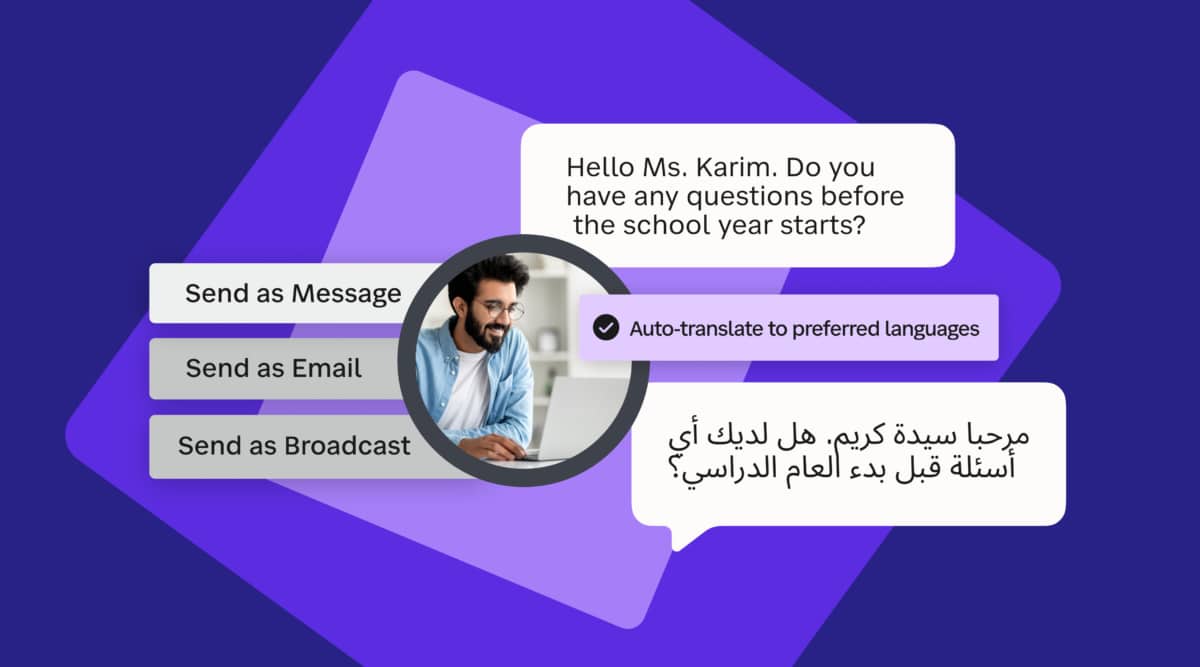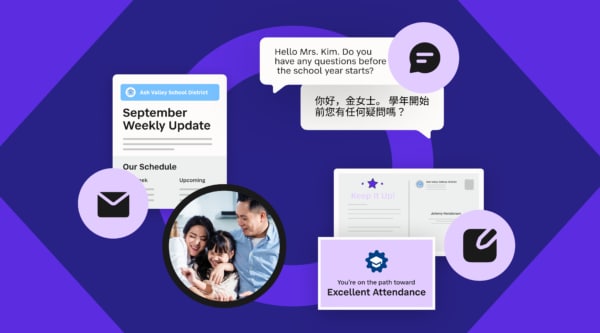

The Real Cost of Excessive Absences
It is time for Local Education Agencies (LEAs) to take action to address the attendance crisis and improve academic achievement. With the number of staffing shortages and declining resources—coupled with increased student social and emotional learning needs—most LEAs are strapped to provide the support needed.
In school districts with large percentages of Emergent Bilingual students, we quickly learned that we had to do more to maintain family engagement, as many families struggled to meet daily needs and were unavailable during the times that schools schedule events for families. To address this disjoint and work to level the playing field, it became evident that we need to communicate more directly to families in their primary language with materials that are engaging to both the adult and student.
SchoolStatus Connect helps schools encourage stronger engagements with families via a centralized communication hub for all channels—SMS, portal, email, and phone. 2-way conversations are automatically translated into the family’s preferred language. Plus, it’s easy to see communication history throughout each student’s time in the district. SchoolStatus Connect also offers alternatives on the portal so families can choose how, where, and in what language they want to receive messages.
Title I (“Title One”), which is a provision of the Elementary and Secondary Education Act passed in 1965 under President Lyndon Baines Johnson, is a program created by the U.S. Department of Education to distribute funding to schools and school districts with a high percentage of students from low-income families. The intention is to create programs that better serve children who, without funding, could not be properly supported.
Billions of dollars are provided through Title I with the goal of equitably providing resources to all students and families. In Title I, there is a requirement that 10% of the funds be spent on family education and engagement. This specification was enacted because it was clear that the school alone cannot change the course for a student. The family needs to be involved.

Families and teachers alike consider communications between home and school to be the number one factor in building mutual trust and investment in a student’s ongoing progress. By fostering relationships between schools and families, we can encourage engagement and inclusion in the larger community. When educators and families work together, students benefit exponentially.
Involvement does not have to be physical for families to be trained and provided support, which is a foundation of why the SchoolStatus approach is reaching the home and working to restore attendance habits.
Once we build more equitable communication habits, we can think about tackling absenteeism together. To plan for school years in the future, we can think about these facts:
- In 2023, the average 3rd grader has not had a full school year that was not impacted by the pandemic
- More than 30% of all 3rd graders have chronic absenteeism issues
- From sampling, approximately 65% of students who were chronic this year were in the past year as well
- While the average student was missing 14–16 days in 2021-2022, our students now are missing 3 to 5 times the amount (42–80+ days)
- A consistently absent 3rd-grade student will have missed conservatively at least 168 days of school by June 2023. This is almost 1 full year of school at the most critical early literacy benchmark year
Missing school has long-term consequences. In addition to achievement, the earning potential difference between students who graduate high school and college and those that do not has now reached well over $1 million lost. That lost income changes the quality of life and the economic situation of the communities that these students will ultimately live in. The consequences of a reduced workforce impact pensions for today’s workers, governmental services for all, and the ability of a family to be available to support the next generation of students.
All districts should review their current attendance information and understand the impact of lowerAverage Daily Attendance (ADA) for:
- Academic Achievement
- Financial Impact
It is not too late to begin the implementation of an attendance support system. In fact, integrating an Attendance Management System now will ensure that the foundation is laid and services are in place in time for the upcoming school year.
SchoolStatus Attend is the most effective way for a school district to tackle chronic absenteeism. The data-driven attendance management platform and processes provide automatic interventions and positive reinforcement to support student success, increase daily attendance, and reduce administrative overhead.
Together we can work to rebuild attendance habits and bring our focus to the academic achievement of all of our students.
Stay Connected
News, articles, and tips for meeting your district’s goals—delivered to your inbox.





